1. Communion with symbolic boxes
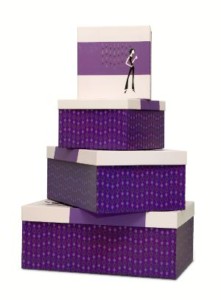 This lovely way of moving into communion is simple yet deep and has been created by Roddy Hamilton, a Church of Scotland minister and creator of Mucky Paws.
This lovely way of moving into communion is simple yet deep and has been created by Roddy Hamilton, a Church of Scotland minister and creator of Mucky Paws.
You will need: five boxes that fit inside each other; symbols drawn or pictures attached on each box for each of the verses (eg, bread and fish, lakes/water, weddings, fishing boats/fishermen, wheat and grapes – don’t limit your imagination); bread and wine; plate and goblet.
The idea is to have a series of symbols painted on boxes hidden within each other, similar to Russian dolls. After each person speaks a verse, they reveal the next symbol by removing one box at a time to finally reveal a real cup of wine and plate of bread. They should remain gathered round the symbols, and the last person breaks bread and shares it with them.
As John’s gospel is full of deeper levels of meaning, this attempts to get behind the signs towards the meaning.
Bread and fish,
that’s all.
Well, of course it is more than that:
on the surface, a picnic,
but beneath, a revelation,
revealing who Jesus is:
the one who takes a little good
and spins a kingdom from it.
Exposed:
Enough compassion even in one morsel for everyone.Water walking:
a night-time adventure,
but of course it was more than that.
On the surface, a tall tale,
but beneath, a revelation,
revealing who Jesus is:
the one who calls disciples out the boat.
Disclosed:
Faith enough to hold us afloat with eyes fixed on Jesus.The Cana wedding:
stone jars brim full of wine,
but of course it is more than that.
On the surface a potential disaster averted
by the quick thinking mother of Jesus,
but beneath, a revelation,
revealing who Jesus is:
the one with abundant generosity.
Unveiled:
The excessive grace of the coming realm.The overflowing nets,
full of every fish in the sea,
but of course it is more than that.
On the surface a good night’s fishing,
but beneath, a revelation,
revealing who Jesus is:
the one whose church is big enough
to welcome all of creation.
Revealed:
A church faithful enough to be open to all.The grain and grape,
a final supper together,
but of course, it is more than that.
On the surface a Passover meal,
but beneath, a revelation,
revealing who Jesus is,
the means of grace,
not a picture,
but a living covenant,
revealed,
in us.
2. Communion in the difficult times: nothing lasts for ever
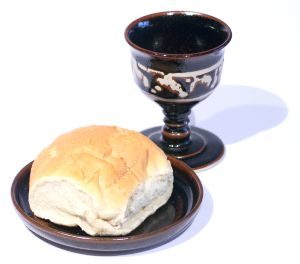 Another from Roddy Hamilton’s, Mucky Paws series.
Another from Roddy Hamilton’s, Mucky Paws series.
This is a thoughtful preparation for sharing together in communion. It’s a prayer of confession based on the idea that nothing lasts for ever, even as we thought it might, except the love that is God. So while the world collapses round about us, it’s not the end. Ever.
You will need: a large box; bread on a platen/plate; wine in a goblet; a bowl of water; a Bible; a brick; a Financial Times newspaper; a set of chains.
Provide a large box on the table assigned for communion. Inside should be bread and wine, a bowl of water and a Bible. Outside the box are objects that symbolise the ideas we thought might last for ever, represented by bricks, the Financial Times and a set of chains. During the prayer of confession read by the first three readers, they place the appropriate item in the box and wait behind the table. During Reader 4’s words, remove the appropriate items from the box that are symbols of what will last for ever.
Reader 1
Forgive our hubris,
for we believed our own kingdoms would last for ever:
we built up our temples,
our pyramids,
our walls,
believing we would outlive everything,
that we were the greater power.
But temples have fallen,
pyramids have crumbled,
walls have been dismantled,
and in the place left by our pride,
we are filled with simple humility.
God says: Nothing lasts for ever.
Trust me through the changes.
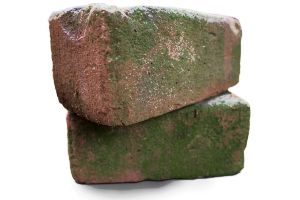 Place the bricks in the box
Place the bricks in the box
Reader 2
Forgive our vanity,
for we trusted our confidence would always be on the rise.
We built our markets and shares,
trusting things would always come out on our side
unaware of what we did not know,
believing we were in control,
that we saw the whole picture.
But global crisis came,
recession hit,
numbers we had never imagined
became common language,
countries fell into a generation’s worth of debt,
and in place of confidence,
we were left with dishonour.
God says: Nothing lasts for ever.
Trust me through the changes.
 Place the Financial Times in the box
Place the Financial Times in the box
Reader 3
Forgive our nerve,
for we trusted our ways were for all time.
We built slave trades on the word of God,
apartheid on biblical texts,
the subjugation of women, of Jew, of the poor
on base theories.
But emancipation became a way of change,
freedom became a value for everyone,
new understanding became a shaper of the faith,
and old established chains broke,
new generations with new ideas brought life,
and are still doing so today,
leading us to question what past generations have taken for granted,
and in place of certainty,
we are left with new theories.
God says: Nothing lasts for ever.
Trust me through the changes.
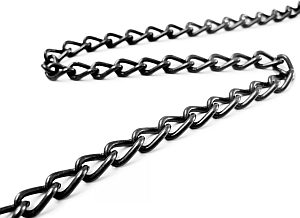 Place chains in the box
Place chains in the box
Reader 4
Yet after confession
one thing is certain:
Nothing lasts forever.
Except one thing:
the love that is God.
Beyond the building of empire,
God builds with unconditional love,
and this will last for ever.
(remove bread and wine from the box)
Beyond economic growth and financial markets,
God grows the economy of the kingdom,
built on grace,
and this will last for ever.
(remove the bowl of water from the box)
Beyond the bondage of prejudice,
God unbinds the word
and brings life,
and this will last for ever.
(remove Bible from box)
These things alone will last,
and they shall not be overcome
by famine and earthquake,
wars and their rumour.
Nothing lasts for ever
except the love that is God alone.
In that shall we live.
O God, may we trust in you through every change.
3. Bread making
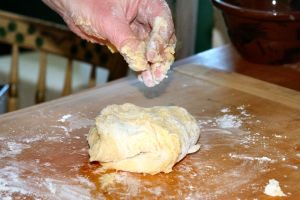
There is nothing quite like making your own bread (warm, soft and doughy) and then sharing it with others. Why not have a session making bread together, making sure that you back-time each and every stage of mixing, kneading, proving and baking. This way you can ensure that it comes out of the oven at just the right time for the breaking and sharing of bread as part of your worship.
Make sure that each person in the group makes their own loaf or their own rolls. The idea here is that they have one for themselves, but after the gathering/meeting/service they also have one to give away to someone of their choosing as a free gift. Our worship should lead to outreach/mission.
If you don’t have access to ovens to bake the bread, borrow some bread makers and just use the baking setting (in effect just using it as an oven) instead of any of the all-in-one settings. The kneading sessions are always good for interesting conversations to naturally develop, or you could use Peter Reinhart’s Meditations on Baking Bread.
Here’s an easy recipe:
Ingredients
- 1lb strong flour
- ¾ pint warm water
- 1 teaspoon salt
- 1 sachet dried yeast
- 2 tablespoons honey
- 1 tablespoon oil (vegetable or olive)
Method
- Put the flour into a large mixing bowl.
- Add the salt and dried yeast and stir.
- Add the oil and honey.
- Add enough of the water to form a workable dough.
- Knead on a clean, floured surface for a few minutes or until the dough becomes smooth and elastic.
- Cover and leave in a warm place for an hour or until the ball is roughly twice its original size.
- Then knead the dough vigorously for a couple of minutes and place in a greased loaf tin.
- Leave for approximately 20 minutes to allow the loaf to rise again.
- Score the top of the loaf to allow rising in the oven – or make your own mark on the top to personalise it.
- Place in a pre-warmed oven of 220 degrees centigrade and bake for 25-30 minutes or until the loaf sounds hollow when tapped lightly.
- Leave to cool and then serve.
Depending on how much time you have it may be possible to get someone to read an extract from one of the meditations in Robert Stanley’s Conversations Over Bread and Wine: Meditations for the Lord’s Supper, CSS Publishing Company, 1998.
Continue with your normal communion liturgy or use some of Margaret Withers’ and Tim Sledge’s fabulous resources from Creative Communion, BRF, 2008.
